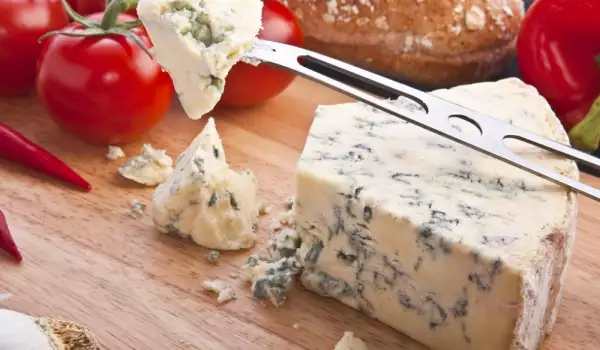Among the aromatic blue cheese studded with mold, Gorogonzola is what represents Italian taste and gives it one of the first places. Gorgonozola is probably the most famous Italian blue cheese, produced only with cow or goat's milk, and in some cases a mixture of both.
Gorgonzola is a soft and crumbly cheese with mold, with 48% fat and controlled appellation of origin. It originates from the Italian region of Lombardy, which was overlooked in the beginning, but later was appreciated. It has been produced for nearly 900 years.
Typical of Gorgonzola is specific, thick, reddish bark izpatrena interesting with gray spots of mold. Cut the peel you will encounter a white to pale whitish yellow soft and crumbly inside, chopped green and blue of "hollow" with noble mold.
The taste of Gorgonzola are the spicy and sweet notes and flavor. It is due to the blue mold, which penetrates everywhere, including the rich flora on the surface.
History of Gorgonzola
Gorgonzola is named after a town in northern Italy, in Lombardy. This area once featured milk passing to and from the areas of Como and Bergamo. There are different stories and legends for the first creation of gorgonzola cheese and its true origins. For authoritative version is considered that by the early 20th century, no one would dwell in this fragrant and delicious dairy product.
For locals, the cheese was known simply as stracchino verde (green cheese). They were only aware that it was made from the milk of cows, tired of the long spring and autumn transitions to and from the alpine pastures. Gradually, however, the glory of this cheese spread, and it became much sought after. A need to find a suitable name for the product emerged and it got the prosaic name of Gorgonzola - one of the many villages where the aromatic cheese is made.
Types of Gorgonzola
There are several types of Gorgonzola, which start from the three - Gorgonzola - Dolce (sweet) and natural or Picanto (with a strong, spicy flavor). While Gorgonzola Dolce has a buttery texture and mild, sweet flavor, wrapped in a damp, brittle crust and aged 60 days, Gorgondzola "Piquant" is a more mature cheese, with a noticeably more hard and brittle, thin, dry crust and tangy flavor. Piquant matures between 90 and 100 days.
Gorgonzola due paste is extremely rare even today, because it is a great delicacy, maturing over more than one year. Understandably, it is characterized by a very strong, spicy flavor and is a favorite of lovers of this type of cheese.
Under the name Gorgonzola una pasta lies cheese produced in factory conditions. Gorgonzola Dolcelatte is another type representing a young, soft, creamy cheese with a sweet taste that is made near Pavia. Gondola is a Danish version of Gorgonzola.

Composition of Gorgonzola
100 g of Gorgonzola cheese contains fat - 27-31 g, protein - 19 g, fat - 26 g, phosphorus - 360 mg., Calcium - 420 mg., sodium - 780 mg., cholesterol - 88 mg., the same weight of delicious cheese has 370 kcal.
Production of Gorgonzola
Gorgonzola is now one of the most popular cheeses with mold, which is why it is produced in large factories throughout the northeastern part of Italy. As a rule, this dairy delicacy is made from cow's milk and is a classic creamy blue cheese.
As the milk is added fermentation and and Penicillium glaucum, as well as Penicillium roqueforti. According to technology, the spores are put in the young cheese through metal bars. These bars create air channels, resulting in the cheese section being in typical green streaks. Usually, Gorgonzola matures for 2 to 4 months.
Gorgonzola made from goat's milk is much more hard and salty. This type of cheese is typical for the area Prealpi of Piedmont and Lombardy, near Lecco and Alessandria.
Gorgonzola is made in cylindrical cakes that weigh between 6 and 13 kg and mature for about two months. It is characterized by thick, hard crust having a reddish-gray color. The white to pale yellow interior is full of blue-green veins.
The current production of Gorgonzola cheese requires that penicillanic bacteria penetrates deep into the veins. It is also important to note that gorgonzola crust is washed with brine.
Culinary use of Gorgonzola
Gorgonzola is excellent accompanying aroma for wine - especially red and thick. If there are fresh sliced fruits, such as pears and figs, a delight for the palate and senses is guaranteed. Gorgonzola is primarily used as a main course cheese.
Quite often, it is added to various types of pasta, risotto, polenta, etc. Salad with the addition of aromatic cheese will fascinate and it makes for no less delicious sauces and dressings that are commonly enriched in flavor with Gorgonzola. You can smear crunchy French baguettes with a little oil and add a slice of Gorgonzola. In this situation, the taste of the cheese will fit perfectly with some of the many types of fruit beers.






















